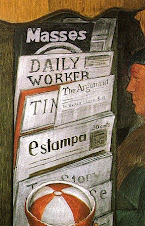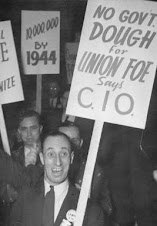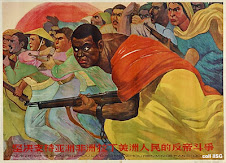By John Catalinotto
Published May 15, 2011 9:07 AM
From Manila to Milwaukee, from Kolkata to Cairo and Cape Town, from Seoul to Santiago de Chile and from Lisbon to London, millions of workers marched and rallied for May Day 2011, to demand an end to austerity and the bosses’ attack on workers’ rights, and in some cases, for an end to a repressive regime. In Havana and other Cuban cities the massive marches supported the embattled government that has been withstanding U.S. imperialist pressure for more than 50 years.
One of the largest and most militant of the anti-government protests took place in Taksim Square, Istanbul, where more than 200,000 Turkish workers, called by four trade union confederations, assembled. From 1977, when regime-backed fascists murdered 33 demonstrators, until last year, the square had been banned to demonstrators. This year’s march was even larger than last year’s in this city of 15 million people.
Red flags waved across the now-famous-worldwide Tahrir Square, as thousands of Egyptian workers celebrated May Day in Cairo. Holding up Egyptian, Libyan, Syrian, Palestinian and Communist Party flags, the marchers chanted for “social justice.” (Workers World, May 12)
Pro-communist demonstrators in Moscow got their inspiration from the Egyptian revolution as they chanted: “Whether Cairo or Moscow, only through fighting will you obtain rights!” (AFP, May 2) The pro-capitalist regime organized its own May Day actions, attempting to build on traditions established during the existence of the USSR, but eliminating the socialist content.
In south Korea, the rightist administration that won the election three years ago has both threatened the neighboring Democratic Peoples Republic of Korea with military action — in coordination with the Pentagon — and has attacked the working class at home. In Seoul at least 50,000 workers gathered and chanted slogans demanding higher pay and better job security, and attacking the regime.
Protesters in Indonesia, brought out by 60 labor unions, marched in the thousands and were confronted by some 10,000 cops. They shouted slogans such as, “The country is rich but the people are poor!” (AFP, May 2)
In the Philippines, more than 3,000 workers protested in a Manila square, demanding higher wages. They burned an effigy of Philippine President Benigno Aquino III, shown grinning in a luxury car.
In the United States, a major march of 100,000 people in Milwaukee and other marches and rallies of thousands in cities across the country showed that International Workers’ Day — revived by the massive action of immigrant workers in 2006 — is very much alive. Not only that, there was evidence of a growing solidarity between immigrant workers and those in the traditional labor unions. (See WW, May 12)
European workers fight ‘austerity’
Workers throughout the European imperialist countries — industrialized, monopolizing technology, with financial investments worldwide and allied militarily with U.S. imperialism through NATO — have seen their rights and living standards diminish steadily over the last two decades. During the last few years, the bosses’ attacks have focused on cutting social benefits and laying off or cutting benefits for public service workers.
The bosses’ pretext for the cuts is budget deficits — as it is also in the U.S. — and in Europe the workers hardest hit have been those in the less stable economies on Europe’s periphery: Greece, Portugal, Ireland and Iceland. But in Italy and Britain, and even in France, Germany and Austria, workers have been under attack.
On May Day, more than 400,000 workers marched in Germany; 100,000 in Vienna, Austria; and there were 200 separate marches across France.
While in most countries the May Day actions followed a traditional script, in some the “traditional” May Day was quickly followed up by direct worker actions.
In Greece, some 15,000 workers hit the streets across the country on May Day to rally against austerity measures. And Greek unions have called for a general strike on May 11 to oppose the measures. It is the latest of a series of a dozen general and near-general strikes over the last 17 months.
In Portugal, another country where the ruling class and their European bankers are using the economic crisis to cut wages and benefits and lay off workers — all imposed under a European Union and International Monetary Fund bailout plan — tens of thousands rallied on May Day itself. Four days later, on May 5, some 250,000 public service workers held a one-day general strike. Another mass protest is planned for May 19 in Lisbon, the capital, and Porto, the second largest city.
Pro-government rallies in Cuba
Hundreds of thousands of workers in Havana, Santiago de Cuba and other cities rallied and marched not in opposition to the government but to show support for the country’s attempt to establish a socialist system and maintain Cuban independence only 90 miles from the country that is the center of world imperialism. President Raúl Castro was among those at Revolution Square in Santiago de Cuba, considered the cradle of the Cuban revolution.
A massive march and rally in Caracas, Venezuela, supported the government of President Hugo Chávez, which had just put through an increase in the minimum wage. Chávez promised the marchers plans to provide full employment in 2012.
In other Latin American capitals, anti-regime protests took place, including one of more than 50,000 people in Guatemala City, protesting the high cost of living and calling for an end to child labor, and in Santiago, Chile, where 30,000 people filled the main boulevard of the capital, calling for more worker rights and criticizing the rightist policies of the Sebastián Piñera government. In Bogotá, Colombia, the U.S.-backed, rightist regime brutalized the protesting workers.
Subscribe to:
Post Comments (Atom)










































No comments:
Post a Comment